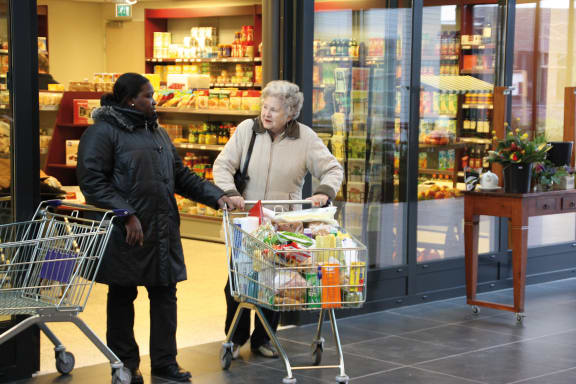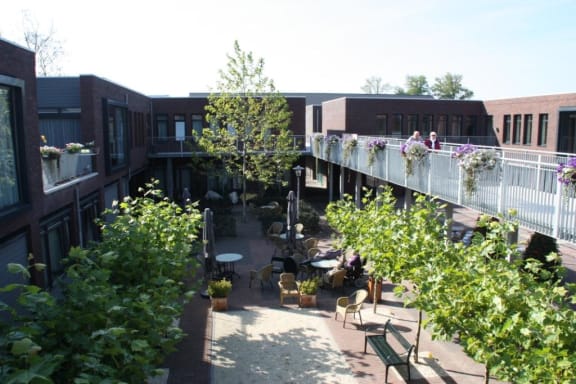Many people with severe dementia spend their last months and years in a hospital environment which bears little connection to the lives they used to lead. But at 'Hogeweyk' near Amsterdam, advanced dementia patients live inside a village that has a supermarket, hair salon, gallery, theatre and restaurants.
But at a specially designed village near Amsterdam, advanced dementia patients live in apartments inside a village that has a supermarket, hair salon, gallery, theatre and restaurants.
Hogeweyk has everything that would make people believe they are in a normal environment – but it has only one entry and exit that connects to the outside world.
The apartments are even furnished to suit the style and period the client closely identifies with – cosy, upmarket, Indonesian style (for those who lived in the former colony), 1950s or modern and urban.
The cutting-edge facility is all about creating normalcy for its occupants and all the staff – including the supermarket workers and hairdressers – are trained to deal with dementia patients.
Kathryn Ryan talks with one of the founders of Hogeweyk, Yvonne van Amerongen, who recently visited New Zealand.
Read an edited snapshot of the conversation:
Yvonne van Amerongen: I was one of the members of the management team of a very traditional nursing home… In 1992 we said to each other ‘What we are offering people living with a severe dementia is not what we would like for our parents or ourselves or our friends. We often said that to ourselves after coffee... and we’d just go on with daily work as usual and nothing changed. So at that time our managing director said ‘We have to sit down and talk about this because we don’t feel we have a good product for people that live with us, but we do it all the time’.
So we sat down one day. I always tell people we sat down somewhere in a restaurant, ten in the morning till ten in the evening, and at the end of the day we knew what we were going to do. We didn’t know how we were going to do it, but we did know, well, what it should be. What we have now in the Netherlands is what we were thinking about at that time.
What was the basic of the model? A benevolent neighbourhood? A removal of dangers and real-world complications?
Yvonne van Amerongen: No, the basic is that people with dementia have confusion in their brain because of dementia, but in an institute in a traditional nursing home, what they meet is more confusion. Because we say to them ‘This is where you live’, but it doesn’t look, it doesn’t smell, it doesn’t taste like home. It doesn’t look like a place to live, it looks like a hospital. It feels like a hospital.
And people with dementia do not understand that. Well, you can explain. It’ll last five minutes or half an hour, maybe two hours. But then that question will be there again. And we said people with severe dementia need to recognise their environment as a normal place to be. And we said that’s not what we’re offering them, so we should offer the people that live with us a normal life, a normal environment. And that’s the start.
Yes, but what kind of normal? How did you design something that would be normal for people with severe dementia?
Yvonne van Amerongen: It’s normal as people over the age of 84 in the Netherlands would have... We built Hogeweyk in the tradition of our region. So when people from New Zealand come over they wouldn’t recognise it as normal houses, no, because it’s Dutch. What we offer these people are normal houses with a front door, living room, kitchen, bedrooms, bathroom, some place to sit outside. A normal house where normal things happen – all meals are prepared according to how you like your meals… you have a birthday party, you watch television, the house is cleaned, the laundry is done – very normal daily things.







